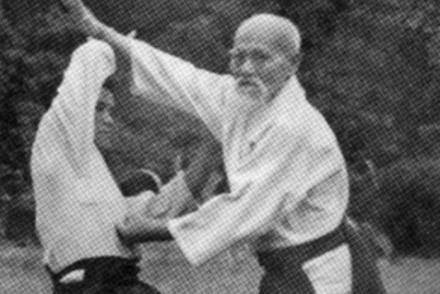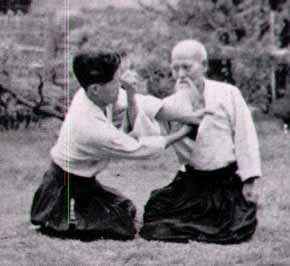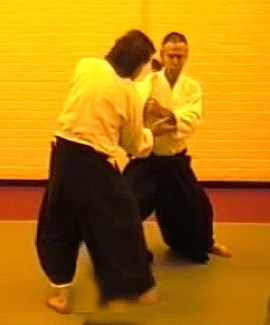
O'Sensei said that, in a practical situation, "atemi is 90% of Aikido". The ability to place a powerful and accurate strike to stun or unbalance your attacker, is a prerequisite for all true Aikidoka. An Aikidoka with knowledge of atemi would instantly mount a strike to a vital point on any would be attacker, as soon as the maai allowed: whenever possible this shall be dictated by the Aikidoka himself.
A sudden, unexpected thrust or strike sets the attacker up for the throw. At times the strike would be applied with the intention of drawing a defensive block from the attacker, which the Aikidoka incorporates into his technique.

The instant you enter into a kuzushi (closing with the opponent) you become vulnerable to a strike. So every unbalancing must be accompanied with a pre-emptive strike from the Aikidoka.
Another use of atemi is when you meet resistance, rather than struggle to enforce the technique and strike the opponent before moving on. An accomplished martial artist will never resist a technique (as in struggle) but shall strike or counter it.
Below sensing my resistance to the technique while entering to the kuzushi, Coyle sensei chose to strike first and then apply a technique

As with most of the original students I came from a judo background. The shihan who were teaching Aikido at that time were budoka holding high grades in kendo or judo in the cases of Abe shihan 6th dan in both as was Nakazono shihan. Being judoka we would not give up our balance easily and it was emphasised that atemi must be used in every omote technique and in most ura.
Today many Aikido clubs do not use atemi and to be brutally frank it is because it is not needed because their "attacker" has spent more time learning how to fall rather than how to attack. There are even videos on how to fall "correctly", I "learned" how to fall by being thrown continuously and no two ukemi were identical.
The problems that Aikido faces today, I feel is because many have chosen to "take that part of Aikido that appeals to them" and eschewed the rest - to the detriment of the art.
Aikidoka should be trained in atemi and how to receive atemi (sweep it aside) even as they themselves attack. It is the normal in Kokoro Kai dojo to block an atemi while attacking - even beginners find this important.
Atemi are not used to distract as such, all atemi should be powerful and accurate the one's usually described as "distracting" should be aimed at the head and if not blocked should strike the head. The intent is to unbalance backwards and to the side in most cases, so the atemi should attack a kuzushi.
Points on Atemi
- They must always attack a weak point
- They must always attack the kuzushi
- They must be delivered on the move
- They must always be accurate and powerful.
I have little time for "associations" and "different schools" of Aikido. Effective Aikido is effective Aikido. It is those who stand between the student and O'Sensei's art and say "it shall be like this", meaning their personal preference, that I feel has led to the splintering of Aikido today.
Another principle not always followed is that we should never attempt to throw someone who has not been unbalanced properly first - someone who "gives" his balance or colludes in any way with the execution of the technique has not been properly unbalanced.
Finally, the principle that many are guilty of is ignoring the fact that we should not attempt to take hold of someone who has not been unbalanced properly first.
Which brings me back to atemi in a real situation is 90% of Aikido (O'Sensei Ueshiba)
